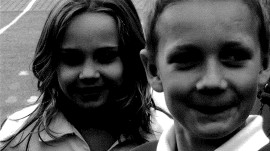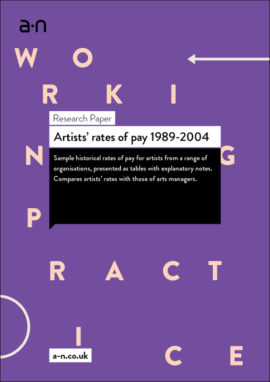engage 18 research – designing narrative and interpretative tools
Describes three different prototypes that created new interpretation and visitor interaction.
Describes three different prototypes that created new interpretation and visitor interaction.
Loic Tallon describes a piece of independent research into audioguides and their use and potential in galleries and museums.
Overview of engage’s “en-quire” programme, still in process at the time of publication.
Interesting and informative discussion of the Teacher Artist Partnership in the context of Continuing Professional Development and pedagogy.
Literature review summary and “thinkpiece” on impact of culture and sports participation on individual quality of life and well-being. Substantial report from the Scottish Research Executive in 2005.
Independent sectoral review of the visual arts commissioned by Arts Council England.
Iain Biggs describes the resistance that has arisen as art-based research carves a place for itself in higher education in the form of PhDs and professional doctorates in fine art. Part of the engage 18 research range of articles.
Stephen Foster, director of John Hansard Gallery, critiques the leadership role and explains how project funding leads to a loss of distinctiveness in the nations’ public galleries.
Contributes to the cultural value debate by arguing there is little point in improving skills of individual leaders if their organisations remain unchanged.
Data on employment conditions and diversity in contemporary visual arts organisations, with comparators to theatre, broadcasting and media, and visual arts in Germany. Published 2005.
Part of the 2005-06 Future forecast series, marking a-n’s 25th anniversary, Curated space looks at strategies and interventions within artist-curator practice.
Asks what distinctive, demonstrable economic role do archives, libraries and museums play in a growing world city whose competitive future depends on building a high-productivity, high-value economy which is fair, inclusive and sustainable?
Part of the 2005-06 Future forecast series, marking a-n’s 25th anniversary, Social space addresses dynamics and divergences within artists’ practice in the social realm.
Explores impact of artists working in educational settings through arts-based interventions organised in what were education action zones of Bristol and Corby, pre Creative Partnerships.
Part of a-n’s 2005-06 Future forecast series, marking its 25th anniversary, Future space addresses the future roles and functions of artists’ workspace.
This report examines how young people on Detention and Training Orders could access, participate and progress in the arts. Researched by Nottingham Trent University, and published by Arts Council England in 2005, this is part of the body of research exploring the role of arts within New Labour Social Inclusion policy.
A proposed arts and cultural sector response to the new Rural Strategy.
Provides sample historical rates of pay for artists from a range of organisations and compares artists’ rates with those of arts managers.
Regional report mapping the creative industries sector in Devon and Torbay, and making recommendations for its support and growth.
The first survey of its kind, intended to provide the beginning of a national register of artists’ studio groups and organisations.
Assessment of Museums, Libraries and Archives’ contribution to key social policy targets including regeneration, health and cultural diversity.
Associated with the Visual Intelligence project at Lancaster University, asks whether it is possible to chart the evolution of an artist’s creative thought through their making processes.
Strengthens the evidence base for the effectiveness of the arts within criminal justice by providing a clear account of evidence and theory base for the sector as of 2005; includes visual arts and film section.
Profile of the shared workspaces and related services used by visual artists and craftspeople in the Yorkshire and Humberside region in 2005.
2005 report on the working environment of West Midlands designer makers, craftspeople and applied artists at different stages of their careers. It was undertaken to explore activity, identify needs and gaps in provision of professional development support.











